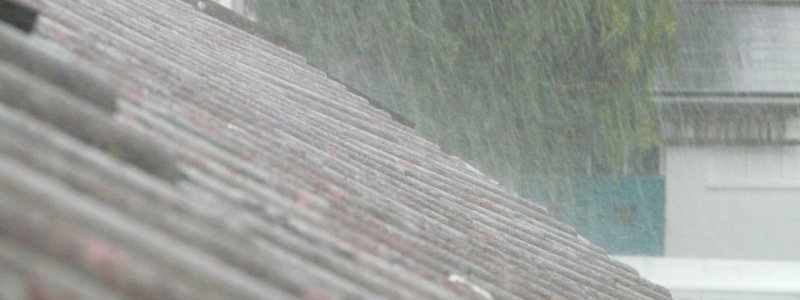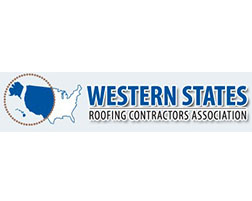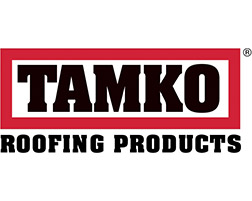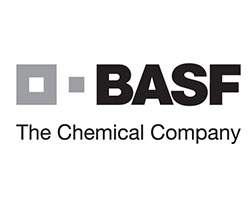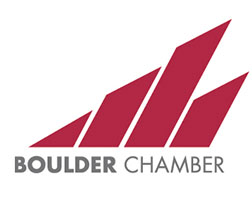Urgent Roof Repairs
When unexpected roof damage occurs, whether from a violent storm, falling debris, or a sudden leak, you don’t have time to wait. Urgent roof repairs are essential to preventing further damage to your home’s structure and interior. Delaying even a few hours can result in costly water damage, mold growth, or structural instability.
At B&M Roofing, we understand the stress of a roofing emergency. That’s why we provide fast, professional service when you need it most. In this guide, we’ll cover how to respond to emergency roof damage, what constitutes urgent roofing issues, and how to get help quickly, without compromising quality or safety.
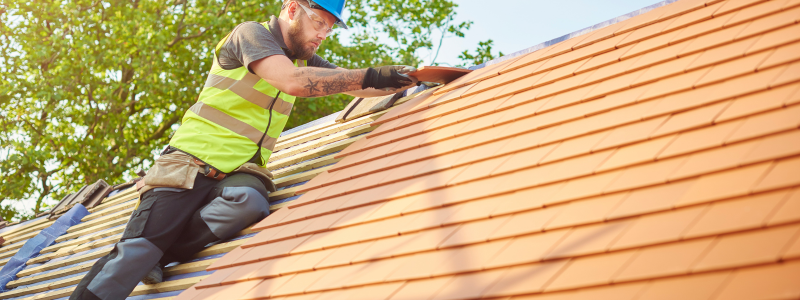
Emergency Roof Repairs: When to Act Immediately
Sure signs mean your roof requires emergency repair services right away. If you notice any of the following, contact a professional roofing contractor as soon as possible:
- Water dripping or leaking into your home during rain
- Sagging or bulging ceilings from water buildup
- Shingles that have blown off entirely due to wind or hail
- Debris, tree limbs, or foreign objects puncturing the roof
- Ice dams causing water backup under shingles
- Visible sunlight through the attic ceiling or roof deck
Even small leaks can lead to significant problems. Water infiltration can damage insulation, drywall, electrical systems, and framing. Early detection and immediate action are crucial to minimizing repair costs.
What Causes Urgent Roofing Problems?
Not all roof damage happens gradually. Many situations that require same-day roof repair are sudden and unavoidable. Common causes include:
Storm and Hail Damage
High winds and hail can dislodge shingles, dent metal components, and expose underlayment. In Colorado, sudden summer storms and winter blizzards frequently cause this issue.
Falling Trees or Debris
Branches or entire trees can crash through your roof during a storm or high-wind event, causing structural and cosmetic damage that must be addressed immediately.
Roof Leaks from Ice Dams
In cold climates, ice dams can form along the roof’s edge, trapping melting snow. Water then seeps under the shingles, resulting in leaks and interior damage.
Aging or Poorly Installed Roof Systems
Older roofs or poorly installed roofing materials are more likely to fail suddenly under stress, especially during extreme weather conditions.

Temporary Roof Leak Fixes You Can Use Until Help Arrives
When you’re faced with a leak or hole in your roof, emergency roofing solutions can help contain the situation until a professional can make permanent repairs.
Tarp the Damaged Area
If it’s safe to access the roof, cover the damaged section with a heavy-duty tarp. Secure it with nails or sandbags to prevent water from entering the structure.
Use Roofing Tape or Sealant
For small cracks or holes, waterproof roof tape or silicone sealant can temporarily stop water infiltration.
Contain Interior Leaks
Place buckets under ceiling drips. Poke a small hole in bulging drywall to release trapped water and reduce the risk of collapse.
Note: These are temporary solutions only. Always seek a professional inspection and repair as soon as possible.
How to Handle a Roofing Emergency Like a Pro
The key to minimizing damage is knowing what to do, and what not to do, when a roofing emergency strikes.
Stay Safe First
Never climb onto your roof during a storm, at night, or in icy conditions. If structural damage is suspected, vacate the affected area.
Shut Off Power if Necessary
If water is leaking near electrical fixtures, shut off power to the area to prevent electrical hazards.
Document the Damage
Take photos and videos of the affected areas. This documentation can support insurance claims and help your contractor evaluate the situation.
Call a Roofing Contractor Immediately
Don’t delay. Prompt attention can be the difference between a simple patch and a complete replacement. B&M Roofing offers responsive, expert repair services for residential and commercial properties.

Professional Emergency Roof Repair: What to Expect
Once you contact a professional roofer like B&M Roofing, here’s how the process typically unfolds:
Inspection and Damage Assessment
Our team will inspect the roof to identify the source of the problem and determine the full extent of the damage.
Temporary Protection Measures
If necessary, we’ll apply a tarp or perform an immediate patch to prevent further water intrusion.
Permanent Repair Plan
We’ll provide a precise, written estimate for permanent roof repair or partial replacement, along with a timeline for completion.
Insurance Assistance
We can help you navigate the insurance claims process by providing inspection reports, photos, and documentation required by your adjuster.
Roof Leak Repair Near Me: Why Choose B&M Roofing
When searching for “roof leak repair near me” or “emergency roofing contractor,” it’s essential to select a company with experience, certifications, and the ability to respond quickly.
B&M Roofing is:
- Highly experienced in Colorado, with over 75 years of operation
- Licensed and insured in Colorado
- Available for urgent repair appointments
- Experienced in storm damage restoration and insurance coordination
- Known for using high-quality materials and precise craftsmanship
Whether you’re dealing with a small leak or significant structural damage, we’ll ensure your home is protected and repaired as quickly as possible.
Avoiding Future Roofing Emergencies
While some roof issues are unavoidable, many emergencies can be prevented with proactive maintenance. To reduce your risk:
- Schedule annual roof inspections
- Clean gutters and downspouts regularly
- Trim overhanging trees near your roofline
- Inspect your attic for moisture, mold, or sunlight leaks
- Act immediately on minor issues before they escalate
Regular upkeep is the best way to extend the life of your roof and avoid costly emergency repairs.

Don’t Wait on Urgent Roof Repairs
If you’re facing unexpected roof damage, the worst thing you can do is wait. Water damage spreads quickly, and delaying repairs can lead to mold, wood rot, and structural failure. Knowing how to identify urgent roof repair needs, and who to call, can save your home and your budget.
For fast, reliable, and professional urgent roof repairs, trust the experts at B&M Roofing. We respond quickly, work with insurance providers, and restore your roof with lasting solutions. Contact us today to get your roof repair process started!
How to Fix a Leaking Roof from the Outside
Roof leaks can quickly escalate into serious problems if not addressed in time. Even a small leak can cause water damage, mold growth, and structural deterioration. Knowing how to fix a leaking roof from the outside gives you a critical advantage in minimizing damage and protecting your home.
Whether you’re dealing with a minor shingle issue or a more complex breach in flashing or underlayment, this guide walks you through step-by-step repair strategies. B&M Roofing has been serving Colorado homeowners for over 75 years, and our team knows what it takes to restore a roof safely and effectively.

Signs of a Roof Leak You Can Spot from the Outside
Before attempting any repairs, it’s essential to correctly identify that your roof is leaking and where the issue is originating. Common visual clues from the exterior include:
- Missing or Curled Shingles: Wind, hail, and UV exposure can cause shingles to warp or detach entirely.
- Cracked Flashing or Vent Boots: Flashing protects vulnerable areas like chimneys, valleys, and vents. When flashing fails, water often seeps in.
- Water Stains on Fascia Boards: Look for discoloration beneath the eaves or behind the gutters.
- Pooling Water or Sagging Gutters: Clogged or misaligned gutters can redirect water into the roof structure.
- Moss or Algae Buildup: These growths trap moisture and accelerate roof deterioration.
Regularly inspecting your roof, especially after major storms, is a key step in preventive maintenance.
How to Fix a Leaking Roof from the Outside: Step-by-Step
Once you’ve spotted exterior signs of a leak, it’s time to act. Below is a practical sequence to help you address minor leaks or apply temporary fixes until professional repairs can be made.

Step 1: Locate the Source of the Leak
Start by inspecting the suspected area. Use binoculars from the ground if your roof is steep or inaccessible. Look for:
- Shingles that appear darker, discolored, or warped
- Gaps around chimneys, skylights, and roof vents
- Cracks in flashing or ridges
- Wet spots under eaves or at the roofline
Pro Tip: You can also run a hose over different roof sections while a second person watches inside the attic for drips or moisture.
Step 2: Apply a Temporary Fix
If rain is in the forecast or you can’t complete a full repair immediately, apply a short-term solution to prevent further water intrusion.
- Use a Tarp: Cover the affected roof section with a durable plastic tarp, extending it past the ridge to ensure proper runoff. Secure it with wood strips and nails.
- Apply Roofing Tape or Cement: For small punctures or cracks, roofing tape or a generous application of roofing cement can temporarily seal leaks.
Safety tip: Never attempt roof work in wet, icy, or windy conditions. Always use fall protection and a stable ladder.
Step 3: Replace Damaged Shingles or Flashing
Start replacing the damaged materials once the weather is dry and you can work safely.
How To Replace a Shingle:
- Carefully lift the shingle above the damaged one to expose the nails.
- Remove the nails using a flat pry bar.
- Slide out the damaged shingle.
- Slide in a new shingle of the same type and color.
- Nail it in place and seal with roofing cement.
How To Repair Roof Flashing:
- Remove any cracked or rusted flashing sections.
- Apply roofing cement under the new flashing.
- Secure it with nails and apply an additional bead of sealant along the edges.
Step 4: Clean and Realign Gutters
Clogged gutters can force water to back up under shingles or rot the fascia.
- Remove all debris from gutters and downspouts.
- Ensure that gutters are sloped correctly (typically 1/4 inch per 10 feet toward the downspout).
- Check for leaks at seams and seal them with gutter caulk or sealant.
Step 5: Seal Exposed Fasteners and Roof Penetrations
Roof leaks often originate around exposed nails, vents, and joints.
- Apply roofing sealant or cement to any exposed or corroded fasteners.
- Re-caulk around chimneys, skylights, and vent boots as needed.
- Use a patching kit to cover small holes in shingles or metal panels.

Materials and Tools You’ll Need
To properly fix a leaking roof from the outside, gather the following supplies:
- Replacement shingles
- Roofing nails and hammer
- Roofing cement or sealant
- Flat pry bar and utility knife
- Ladder and safety harness
- Tarp and wood strips (for temporary repairs)
- Caulking gun and roofing caulk
- Gutter scoop or garden trowel
Having the right tools on hand reduces the risk of errors and helps ensure your repair lasts.
When to Call a Professional Roofer
While a handy homeowner can manage some minor leaks, there are several situations where calling a professional like B&M Roofing is strongly recommended:
- You cannot safely access the roof or identify the leak source.
- The leak involves large sections of roofing or structural damage.
- Water is entering your attic or living space.
- There are signs of mold, insulation damage, or ceiling discoloration.
- Your roof is under warranty, and you want to avoid voiding it.
A licensed roofer can provide a thorough inspection and professional-grade repairs and help with insurance documentation if needed.
Why Choose B&M Roofing for Roof Leak Repair
B&M Roofing has built a reputation as one of Colorado’s most trusted roofing contractors by offering reliable solutions backed by expert craftsmanship. When you choose us for your roof repair, you get:
- Experienced roofers trained to detect hidden damage.
- Emergency response for active leaks or storm damage
- High-quality materials and attention to detail
- Long-term protection, not just a quick fix
- Honest guidance about whether to repair or replace
We’ve helped thousands of homeowners across the Front Range secure their homes against hail, snow, and wind. You can count on us to do the job right the first time.

Fix Roof Leaks Fast: Start with a Trusted Roofing Partner
Learning how to fix a leaking roof from the outside empowers homeowners to take quick action, but not all leaks should be handled alone. When safety, quality, and long-term performance matter, trust the professionals at B&M Roofing.
Contact B&M Roofing today for a professional roof inspection or emergency repair assessment. Our expert team will identify the source of the leak, provide transparent recommendations, and get your roof back to peak condition, fast.
Average Insurance Payout for Hail a Damaged Roof
When a hailstorm hits, your roof is often the first line of defense, and sometimes, the first to take damage. For homeowners in hail-prone areas like Colorado, understanding the average insurance payout for hail-damaged roof repairs is essential to navigating the claims process and protecting your investment.
At B&M Roofing, we’ve worked with thousands of homeowners across the region to assess hail damage and support them through insurance claims. Here’s what you need to know about what insurance typically pays, and how you can ensure you get the compensation you deserve.

What Is the Average Insurance Payout for Hail Damage to a Roof?
While actual amounts vary depending on several factors, the average insurance payout for hail damage to a roof in the U.S. typically ranges from $8,000 to $15,000. In some cases, especially with high-end roofing materials or extensive damage, payouts can exceed $20,000.
That said, your payout depends on more than just national averages. The extent of the damage shapes it, your roofing materials, your insurer’s policies, and the cost of local labor and materials.
Key Factors That Affect Your Insurance Payout
Several elements can influence the amount you receive for hail damage claims. Understanding these key factors, such as the severity of the damage, the type of roofing materials, the age of your roof and associated depreciation, your insurance policy terms, and local labor and material costs, will help you navigate the claims process more effectively and ensure you maximize your compensation.
Severity of the Damage
Regarding insurance payouts for roofing damage, the extent of the damage plays a significant role in determining the amount compensated. Generally, total roof replacements yield higher payouts than minor spot repairs, as the former involves more extensive work and resources. Damage to crucial components such as the underlayment, flashing, or decking can further increase the overall estimate for repairs. Insurers consider these factors to assess the total costs involved in restoring your roofing system.
Roofing Material Type
The costs of roofing materials can vary significantly depending on the type chosen. For instance, standard asphalt shingles are generally more affordable to replace than other options. In contrast, materials such as metal, tile, or composite shingles tend to be much more expensive, which can substantially increase the overall payout for a roofing project. Understanding these differences is essential for budgeting and planning any roofing work.
Roof Age & Depreciation
Regarding roof insurance claims, it’s essential to understand that older roofs might not be eligible for a full replacement value. If your policy offers actual cash value (ACV), depreciation will be deducted from your claim, significantly affecting the payout. On the other hand, replacement cost value (RCV) policies provide a more advantageous option, as they cover the full cost necessary to replace the roof, regardless of its age, minus your deductible. This distinction can significantly affect how much you receive in the event of a claim.
Policy Terms & Deductibles
When considering your insurance policy, it’s essential to recognize that the coverage you choose significantly impacts your overall experience. Opting for higher deductibles can lead to reduced net payouts, which may affect your financial recovery in the event of a claim. Some insurance policies include specific exclusions or caps related to hail damage, meaning not all damage may be covered under your plan. It’s also worth noting that certain insurers provide discounts for using hail-resistant roofing materials, but these policies may come with stricter criteria regarding payout eligibility. Understanding these factors will help you make more informed decisions about your coverage.
Local Labor and Material Costs
Payouts for insurance claims are tailored to align with regional market rates. In regions such as Colorado, where the expenses for skilled labor and materials tend to be higher, insurance estimates will account for these increased costs. However, these higher expenses must be well-documented to ensure that they are reflected accurately in the payouts.

How to Maximize Your Hail Damage Insurance Payout
Payouts for insurance claims are tailored to align with regional market rates. In regions such as Colorado, where the expenses for skilled labor and materials tend to be higher, insurance estimates will account for these increased costs. However, these higher expenses must be well-documented to ensure that they are reflected accurately in the payouts. To maximize an insurance payout for hail damage, it is crucial to gather thorough documentation of the damage, including photographs and detailed repair estimates. Working with reputable contractors who provide comprehensive assessments can also help substantiate the claim and ensure a fair payout.
Step 1: Document the Damage Immediately
- Take clear, high-resolution photos of hailstones, roof damage, and surrounding property damage.
- Note the date and time of the storm.
- Keep any hailstones in your freezer for size documentation.
Step 2: Get a Professional Roof Inspection
A qualified roofing expert can identify issues that might be missed during a basic visual inspection.
- At B&M Roofing, we provide detailed inspection reports and photo documentation that align with insurance adjuster needs.

Step 3: File Your Claim Promptly
Most insurers have strict deadlines for filing hail damage claims, typically 6 to 12 months.
- Include your inspection report and all photos.
- Be honest and thorough to avoid disputes or delays.
Step 4: Work with a Contractor Experienced in Insurance Claims
Hiring a roofer who understands the insurance process is key.
- We’ve worked directly with insurance companies for decades.
- Our team ensures you’re not underpaid or forced into cutting corners on necessary repairs.
- We meet with adjusters on-site to advocate for fair compensation.
Why Choose B&M Roofing for Hail Damage Claims
B&M Roofing has been Colorado’s trusted roofing partner for over 75 years. Here’s how we help maximize your insurance claim:
- Thorough Inspections: Our experts know precisely what adjusters need to see.
- Reliable Emergency Repairs: We use top-grade materials and industry-best installation practices.
- Insurance Advocacy: We walk you through the claim step by step, from inspection to payout.
- Peace of Mind: No pressure. No shortcuts. Just transparent, dependable service.
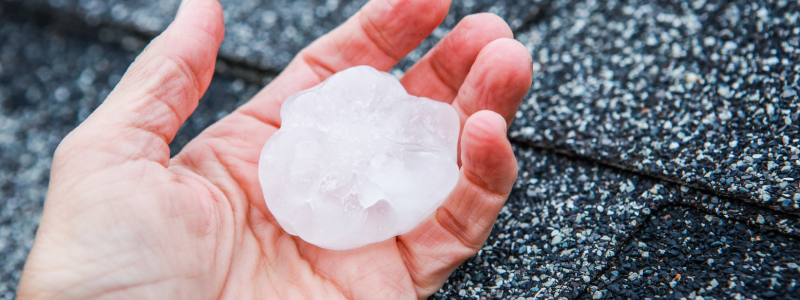
Have Hail Damage? Don’t Wait – Contact B&M Roofing Today!
Knowing the average insurance payout for hail damage roof claims helps you prepare, but every situation is unique. The sooner you act, the better your chances of receiving the full coverage you’re entitled to.
Contact B&M Roofing today for a free hail damage inspection and expert help with your insurance claim.
How Do You Fix a Leaking Roof Without Replacing It?
A leaking roof doesn’t always mean you need to replace the entire thing. In many cases, targeted repairs can resolve the issue effectively and extend the life of your roof. Understanding how to fix a leaking roof without replacing it is essential for homeowners who want to save money, protect their homes, and act fast when water starts dripping from the ceiling.
At B&M Roofing, we’ve helped countless Colorado homeowners navigate roof leak repairs, often without a complete roof replacement. This guide covers everything you need to know to address the problem head-on.

What Causes Roof Leaks?
Roof leaks can come from various sources, and identifying the origin is the first step in deciding whether repair or replacement is needed.
Common causes include:
- Damaged or missing shingles due to wind or storm impact
- Cracked flashing around vents, chimneys, or skylights
- Clogged gutters or downspouts that allow water to pool
- Worn-out sealants around penetrations
- Ice dams form at the roof’s edge during winter.
- General wear and tear on aging roofs
In many of these situations, localized repairs can solve the problem, especially if the rest of the roof is still structurally sound.
Can You Fix a Leaking Roof Without Replacing It?
Yes, in most cases, roof leak repair is possible without replacing the entire roofing system.
The feasibility depends on:
- The Extent of the Damage: A small leak caused by a few missing shingles is typically easy to repair.
- The Age of the Roof: Newer roofs with isolated damage can often be fixed without significant work.
- The Location of the Leak: Leaks near flashings or vents are usually more straightforward to fix.
- Roofing Material Type: Asphalt shingles, tile, and metal roofing have specific repair methods.
If your roof is generally in good condition and the damage is limited, a repair can buy you years of extra life before a complete replacement becomes necessary.

How to Fix a Leaking Roof Without Replacing It
Here’s a step-by-step breakdown of how to tackle roof leaks using effective repair methods:
Identify the Source of the Leak
Begin by inspecting your home’s interior for:
- Water stains on ceilings or walls
- Damp insulation in the attic
- Mold or mildew in corners
Outside, look for:
- Damaged shingles or tiles
- Gaps in flashing
- Soft spots or visible sagging
If you’re not confident locating the leak, a professional roof inspection from a company like B&M Roofing is highly recommended.
Temporary Fixes to Prevent Immediate Damage
If rain is in the forecast and you can’t repair the leak immediately, use these stop-gap measures:
- Tarp the roof: Secure a waterproof tarp over the affected area with roofing nails or weights to prevent further water intrusion.
- Use roofing or caulk: Apply waterproof roof tape or caulking over cracks and holes for a temporary seal.
These are only short-term fixes. You should arrange for a more permanent solution as soon as possible.
Replace Damaged Shingles
If the leak is due to missing or cracked shingles:
- Gently lift the surrounding shingles and remove the damaged ones.
- Slide a new shingle into place and secure it with roofing nails.
- Apply roofing cement over the nail heads for added protection.
Repair Flashing and Seals
Leaking often occurs near roof penetrations, like chimneys and vent pipes:
- Remove cracked or loose flashing.
- Clean the area and apply new flashing with roofing cement.
- Reseal all gaps with a high-quality waterproof sealant.
Apply a Roof Sealant or Coating
For flat or metal roofs, applying a waterproof coating can seal small cracks and prevent future leaks:
- Clean the roof surface thoroughly.
- A roller or brush is used to apply elastomeric sealant across the affected area.
- Let it cure as instructed for maximum protection.
This method works particularly well for roofs with minor wear that aren’t ready for replacement.
Clear Gutters and Downspouts
Backed-up gutters can cause water to pool on the roof and leak into the home. Ensure all gutters and downspouts are:
- Free of leaves, twigs, and debris
- Securely fastened to the fascia.
- Properly directing water away from the home’s foundation.
Regular cleaning helps prevent leaks and preserves the overall health of your roofing system.

Standard Tools and Materials for Roof Leak Repairs
To successfully patch a leaking roof without replacing it, you’ll likely need the following:
- Roofing cement or caulk
- Flashing tape
- Replacement shingles or tiles
- Waterproof roof sealant
- Roofing nails and a hammer
- Ladder and safety harness
While some of these steps are DIY-friendly, many require experience and safety precautions, especially when working at heights. That’s why professional repair services from B&M Roofing are the safest and most effective option for most homeowners.
When to Call a Professional Roofing Contractor
Some roof leaks are easy to spot and fix, but others are signs of more serious issues. Contact a roofing expert if:
- You can’t locate the leak’s origin
- The roof is leaking in multiple areas.
- There is visible structural damage or widespread mold.
- You’ve tried a repair, and the leak persists.
B&M Roofing offers comprehensive roof inspections, targeted leak repairs, and expert guidance on whether repair or replacement is the right option. We’re here to ensure your roof stays strong without unnecessary costs.
How to Prevent Roof Leaks in the Future
An ounce of prevention is worth a pound of repair. Follow these maintenance tips to reduce the risk of future leaks:
- Inspect your roof at least twice a year, especially after storms.
- Clean gutters and downspouts regularly
- Trim overhanging tree limbs to prevent debris accumulation.
- Seal roof penetrations such as chimneys and vent pipes
- Schedule professional roof inspections annually.
Staying proactive is the best way to extend the lifespan of your roof and avoid emergency leaks.

Repair First, Replace Only When Necessary
If you ask, “How do you fix a leaking roof without replacing it?” The answer is to act quickly, identify the source, and apply targeted repairs that restore integrity without the cost of full replacement.
Whether your leak is due to storm damage, faulty flashing, or aging shingles, B&M Roofing has the tools, experience, and dedication to get the job done right.
Need a Professional Opinion?
Contact B&M Roofing today for a thorough roof inspection and honest assessment. We’ll help you fix your roof leak without replacing it, unless necessary.
How to Get Insurance to Cover Roof Replacement
At B&M Roofing, we understand that a roof replacement is a significant investment for homeowners. Fortunately, many insurance policies can help alleviate some of the financial burden. However, navigating the claims process can be challenging, and it’s essential to fully comprehend your policy to ensure you receive the coverage you deserve.
In this guide, we will walk you through the steps to obtain insurance coverage for your roof replacement, outline the types of damage typically covered, and share expert tips to enhance your chances of getting your claim approved. We’re here to ensure you feel confident and informed throughout the roof replacement process.

Understanding Your Homeowners Insurance Policy
Before filing an insurance claim for roof damage, it’s essential to understand what your policy covers. Homeowners insurance typically covers roof replacements caused by sudden and unexpected damage. However, not all policies are the same, and exclusions can apply.
Types of Coverage: Actual Cash Value vs. Replacement Cost Value
Insurance policies generally fall into one of two categories:
- Actual Cash Value (ACV): Covers the depreciated value of your roof at the time of damage, meaning you may only receive partial reimbursement for replacement costs.
- Replacement Cost Value (RCV): Covers the full cost of replacing the roof, minus the deductible, without factoring in depreciation.
It’s essential to check your policy documents or contact your insurance provider to confirm your coverage type.
Standard Exclusions in Roof Insurance Policies
Insurance companies often exclude certain types of roof damage from coverage, including:
- Wear and tear or age-related deterioration
- Neglect or lack of maintenance
- Pre-existing damage before obtaining the policy
- Damage caused by improper installation or faulty materials
Understanding these exclusions can help determine whether filing a claim is viable.
What Types of Roof Damage Are Covered by Insurance?
Not all roof damage qualifies for insurance reimbursement. Most insurance providers cover damage caused by the following:
Storm Damage
Strong winds, hail, heavy rain, and severe weather conditions can damage shingles, flashing, and other roofing components. Your claim will likely be approved if your roof has suffered storm-related destruction.
Falling Debris
Tree branches, airborne debris, or other objects hitting the roof during storms can cause significant damage, which is often covered by insurance.
Fire and Natural Disasters
Insurance policies typically cover the cost of replacing the roof if your home experiences a fire, whether from natural causes like lightning or accidental incidents.
Sudden Accidents
Unexpected incidents, such as a neighbor’s tree falling onto your roof or structural failure due to an unforeseen event, may qualify for coverage.

Steps to Get Insurance to Cover Roof Replacement
If you notice damage to your roof, here are some key steps to take in order to get insurance to cover your roof replacement.
Assess the Damage
After a storm or incident, visually inspect your roof for signs of damage. Look for missing, cracked, or curled shingles, hail dents, water stains on ceilings, or any noticeable sagging. Even minor issues can escalate into major problems if left unaddressed.
Document Everything
Thorough documentation is crucial for a successful claim. Take clear, time-stamped photos and videos of the damage from multiple angles. Keep records of previous roof repairs and maintenance, proving the damage was not due to neglect.
Contact Your Insurance Provider
Notify your insurance company as soon as possible. Be prepared to provide:
- The date and cause of the damage
- A detailed description of the affected areas
- Photos and documentation of the damage
- Any repair estimates from professional contractors
Your insurer will likely schedule an adjuster to assess the situation.
Get a Professional Roof Inspection
While insurance adjusters will conduct their inspection, hiring a licensed roofing contractor can provide an independent, professional evaluation. Roofing experts, like us, can:
- Assess the full extent of damage
- Provide a detailed inspection report
- Advocate for you during the claims process by ensuring the adjuster does not overlook damage
Having an expert on your side can significantly increase the likelihood of claim approval.
File Your Claim
Once you have all the necessary documentation, submit your claim through your insurance provider’s process. Some companies allow online submissions, while others require a call or in-person meeting. Be sure to:
- Follow up on your claim status regularly
- Request a copy of the adjuster’s report
- Review your insurance provider’s response carefully
Negotiate If Needed
Insurance companies may deny or underpay claims for various reasons, such as disputed damage assessments or policy exclusions. If this happens:
- Request a reassessment if you disagree with the adjuster’s findings
- Provide additional documentation from a licensed roofing contractor
- Appeal the decision if necessary and consider hiring a public adjuster for further assistance
Hire a Reputable Roofing Contractor
Once your claim is approved, you must choose a trusted roofing contractor to handle the replacement. When selecting a company:
- Look for a licensed and insured roofing specialist
- Ensure they have experience handling insurance claims
- Request a detailed contract outlining costs, materials, and timelines
B&M Roofing has extensive experience working with insurance companies, making the roof replacement process smooth and stress-free.

Common Reasons Insurance Claims Are Denied
Even when you follow the correct steps, claims can be denied due to:
- Pre-existing damage or normal wear and tear
- Failure to report damage promptly
- Insufficient documentation
- Policy exclusions or deductible limitations
To avoid claim denials, always keep maintenance records, report damage promptly, and consult a roofing professional before submitting your claim.
How to Improve Your Chances of a Successful Roof Insurance Claim
While insurance claims can sometimes be unpredictable, you can improve your chances of approval by taking proactive steps:
Schedule Regular Roof Inspections
Routine inspections help identify potential issues before they escalate. A well-maintained roof is less likely to have claims denied due to neglect.
Keep Detailed Maintenance Records
Save invoices, receipts, and inspection reports. These documents prove that your roof was in good condition before the damage occurred.
Work with an Experienced Roofing Contractor
A reputable roofing company like B&M Roofing can provide the necessary documentation and advocacy to help you secure insurance approval.

Get Expert Help for Your Roof Replacement Claim
At B&M Roofing, we understand that filing an insurance claim for roof replacement can feel overwhelming. However, we’re here to help simplify the process. By ensuring you understand your policy, documenting any damage accurately, and collaborating with our experienced team, we can enhance your chances of getting your claim approved.
Don’t wait for the issue to escalate if your roof has suffered damage from a storm, falling debris, or any other unforeseen circumstances.
Need assistance with your roof insurance claim? Contact us today for a professional inspection and expert guidance on handling the insurance claims process.
How Do I Know If My Roof Has Hail Damage?
Hailstorms can cause significant damage to your roof, but spotting the signs isn’t always easy. Even small hailstones can weaken shingles, compromise your home’s structural integrity, and lead to costly repairs if left unchecked. If you’re wondering, “How do I know if my roof has hail damage?” this guide will walk you through the key signs to look for, how to inspect your roof safely, and when to call a professional for an assessment.

Signs of Hail Damage on Your Roof
Hail damage can vary based on the storm’s severity, the size of the hail, and your roofing materials. Below are the most common indicators that your roof has been impacted by hail:
Visible Exterior Damage
Hail can inflict significant damage to roofing shingles, leading to various issues that compromise the integrity of your roof. Dented or cracked shingles often result from hail, creating small impact craters and fractures that can break sections of the material. If you observe an unusual amount of granules collecting in your gutters or downspouts, this could indicate granule loss on asphalt shingles, signaling that your roofing may be weakened and less effective at protecting your home.
The combination of missing granules and cracked shingles can also expose the underlying protective underlayment, making your roof vulnerable to potential leaks and further water damage. It’s crucial to regularly inspect your roof for these signs of wear to ensure its continued durability and safeguard your home from the elements.
Damage to Metal Roof Components
- Dents in Gutters, Downspouts, and Flashing: If you see visible dents in these areas, your shingles may also be damaged.
- Deformations on Metal Panels: Metal roofing can suffer dents and warping from heavy hail impacts, affecting its durability and lifespan.
Water Leaks & Interior Signs of Damage
- Water Stains on Ceilings and Walls: Discoloration or stains inside your home can signal a leaky roof.
- Mold Growth Due to Hidden Leaks: Hail damage can create tiny cracks that allow moisture to seep in, leading to mold and mildew.
- Peeling Paint or Bubbling Drywall: Moisture intrusion from hail damage may cause paint to peel or drywall to bulge.

How to Inspect Your Roof for Hail Damage
If your area recently experienced a hailstorm, inspecting your roof for damage is crucial. Here’s how you can do it safely:
Safety Precautions Before Inspecting
When inspecting your roof, it’s wise to start from the ground using binoculars. This allows you to examine the condition without the risks associated with climbing up. If you notice any damage, avoid walking on unstable shingles, which can lead to accidents. Always prioritize your safety during such inspections.
Using a Professional Roof Inspection
While a visual inspection can reveal some damage, a professional assessment can uncover hidden issues:
- Infrared Scans & Moisture Detection: Experts use advanced tools to find leaks and weak spots.
- Structural Integrity Analysis: A professional inspection ensures your roof remains stable and secure.
- Comprehensive Damage Reports for Insurance Claims: Roofing experts provide detailed reports that help with insurance claims.

What to Do If You Find Hail Damage
If you discover hail damage on your roof, acting promptly to prevent further issues is crucial. Start by assessing the severity of the damage: minor dents may not require immediate attention, but missing shingles or leaks should be addressed immediately. Document the damage with clear photos, then schedule an inspection with a roofing professional for a comprehensive assessment. If repairs are needed, don’t forget to file a homeowners insurance claim as soon as possible, as many insurers have time limits for hail damage claims. Taking these steps will help ensure your roof is restored effectively and efficiently.
Assessing the Severity of the Damage
Not its hail damage requires immediate repairs, but it’s essential to determine the severity:
- Minor Damage: Small dents or slight granule loss may not need urgent attention.
- Severe Damage: Missing shingles, leaks, or structural issues require immediate repairs.
For severe damage and leaks, request a repair estimate from us!
Filing a Homeowners Insurance Claim
If hail has damaged your roof, follow these steps to streamline your indolence claim:
- Document the Damage: Take clear and detailed photos of all affected areas. Capture images from different angles to showcase the extent of the damage. Ensure you also photograph nearby objects that may help illustrate the impact, such as damaged vegetation or nearby structures. Additionally, consider taking notes on what you see, including the hailstones’ size, as this information may be valuable for your insurance claim.
- Schedule an Inspection with B&M Roofing: Contact B&M Roofing to arrange a professional inspection of your property. Our team of experts will assess the damage and thoroughly evaluate your roof and any other impacted areas. We will document all findings with comprehensive reports and detailed photographs, which will be essential for your insurance claim. Our experience dealing with insurance companies will ensure you receive the necessary documentation to support your case.
- File Your Claim Promptly: After documenting the damage and scheduling an inspection, filing your insurance claim as soon as possible is crucial. Most insurance companies set a time limit for filing claims related to hail damage, so acting quickly is vital to securing your coverage. Review your policy to understand the specific timelines and requirements. Gather all necessary documentation, including the assessment from B&M Roofing, to streamline the claims process and improve the chance of a successful resolution.
Why Choose B&M Roofing for Hailit’sage Repair?
B&M Roofing has been a trusted name in roofing services for over 75 years. Here’s why homeowners choose us for hail damage repair:
- Licensed & Insured Roofing Specialists: Our team meets all industry standards for safety and quality.
- Expert Hail Damage Assessments: We provide professional inspections to detect minor damage.
- Seamless Insurance Assistance: We work directly with insurance companies to make your claims process stress-free.
- Durable Repairs & Quality Craftsmanship: Our repairs are designed to extend the life of your roof and enhance its protection.
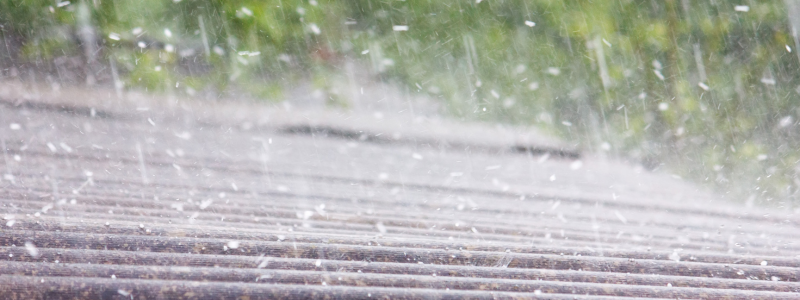
Schedule Your Roof Inspection Today!
At B&M Roofing, we understand that hail damage can lead to significant problems if not addressed promptly. If you suspect your roof has been impacted, don’t wait for minor issues to escalate into expensive repairs. Our experienced team is ready to thoroughly inspect your roof and offer expert recommendations to protect your home.
Contact us today or request a free inspection online, we’re here to help!
Longest Lasting Roofing Shingles
At B&M Roofing, we understand that durability is crucial when selecting roofing materials. Our impact-resistant shingles deliver exceptional protection against severe weather conditions, ensuring your home remains safe and secure. Our long-lasting roof shingles are designed to provide homeowners with decades of reliability and peace of mind.
In this guide, we’ll explore the unique features of impact-resistant shingles, highlight their advantages, and share our top recommendations for roofing materials with the most extended lifespan. You can trust B&M Roofing to help you make informed choices for your roofing needs.

What Are Impact Resistant Shingles?
Impact-resistant shingles are designed to withstand hail, debris, and strong winds better than traditional asphalt shingles. They are engineered with advanced materials that help prevent cracking and breaking upon impact, helping them be some of the longest-lasting roofing shingles.
How Are They Different from Standard Shingles?
The primary difference between impact-resistant and standard shingles is their composition and durability. Traditional shingles often crack or lose granules when hail strikes, whereas impact-resistant shingles flex and absorb the impact, reducing damage.
How Are Impact Resistant Shingles Rated?
Impact-resistant shingles are tested using the UL 2218 Class Rating System, which determines their ability to resist damage from hail and other debris.
- Class 1 & 2: Basic resistance to minor impacts.
- Class 3: Improved durability against medium-sized hail.
- Class 4: Highest impact resistance, capable of withstanding hailstones up to 2 inches in diameter.
In Colorado, we recommend either Class 3 or Class 4 shingles, due to the increased frequency of hail. These impact-resistant shingles are some of the longest lasting roofing shingles you can buy for your home.
Benefits of Impact-Resistant Shingles
When it comes to safeguarding your home from the unpredictable forces of nature, choosing the right roofing material can make all the difference. Impact-resistant roofing offers superior protection against hail and storms by significantly reducing the risk of leaks and minimizing the potential for costly repairs. These specialized shingles have been engineered for enhanced durability, often outlasting standard asphalt shingles, contributing to a longer lifespan for your roof. In addition to the immediate benefits of increased resilience, many homeowners may also enjoy potential insurance discounts, as numerous insurers recognize the value of impact-resistant roofing and offer lower premiums.
Investing in a stronger, more durable roof provides peace of mind and enhances the overall value of your property, making it a smart choice for those looking to increase their home’s resale value in the future. Our expert roofing services can ensure your roof’s safety throughout the years!

Longest Lasting Roof Shingles: Which Ones Offer the Best Durability?
If investing in a new roof, you want materials that will last for decades. Here’s how the most common roofing shingles compare in lifespan and durability.
Asphalt Shingles (Lifespan: 20-50 years)
The most common and affordable option for roofing materials is often asphalt shingles. These shingles are favored for their cost-effectiveness and ease of installation, making them popular among homeowners. They are also available in impact-resistant varieties, providing extra durability against harsh weather conditions, such as hail or falling debris. However, it’s essential to know that asphalt shingles can be prone to granule loss and wear over time, which may affect their performance and appearance. Regular maintenance and inspections can mitigate these issues and extend the roof’s lifespan.
Metal Roofing Shingles (Lifespan: 40-70 years)
Products that are extraordinarily durable and impact-resistant offer a remarkable level of protection against various environmental factors. They are specifically designed to withstand fire, wind, and UV exposure, making them an ideal choice for those needing reliable performance and longevity. While these products may have a higher initial cost, their benefits far outweigh the investment, as they typically require lower long-term maintenance, ultimately leading to savings over time. By choosing materials that prioritize durability and resilience, individuals and businesses can ensure that their investments stand the test of time, providing peace of mind for years to come.
Slate & Tile Shingles (Lifespan: 50-100 years)
Natural stone and clay materials are renowned for their durability and longevity, often lasting for generations without significant degradation. Their impressive resistance to weather elements and fire makes them an ideal choice for construction in various climates, providing homeowners with peace of mind about the safety and stability of their structures. However, it is essential to note that the heavy weight of these materials necessitates a robust roof structure to support them effectively. This requirement highlights the need for careful planning and consideration during the design phase to ensure that the building can accommodate the substantial load while maintaining structural integrity and aesthetic appeal.
Factors That Affect the Longevity of Roof Shingles
Even the best roofing shingles need proper care to reach their entire lifespan. Here are the key factors that impact their durability:
Installation Quality
Proper installation is essential for long-lasting roofing shingle performance. Poorly installed shingles are more likely to curl, crack, or leak. B&M Roofing ensures that every shingle is installed with precision and expertise.
Regular Maintenance & Inspections
Routine roof inspections help catch minor issues before they become expensive repairs. Homeowners should:
- Clear gutters and downspouts to prevent water buildup.
- Check for loose or missing shingles after storms.
- Schedule a professional inspection at least once a year.
Weather & Environmental Exposure
Roofs in hail-prone areas (like Colorado) benefit from impact-resistant shingles to prevent damage. In hot climates, UV-resistant shingles help reduce sun damage and extend roof life.
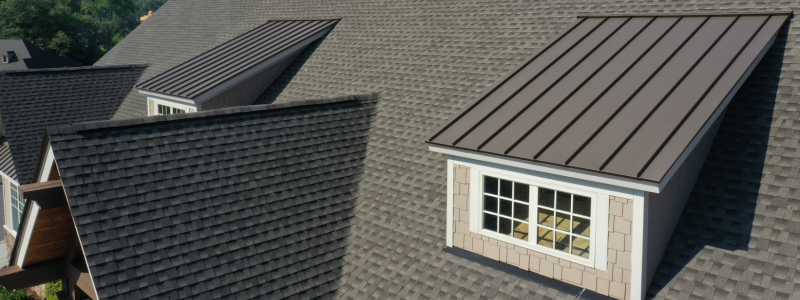
Choosing the Best Impact-Resistant & Long-Lasting Shingles for Your Home
When selecting shingles for durability and weather resistance, consider these factors:
Top-Rated Impact Resistant Shingle Brands
- Owens Corning Duration Storm: Class 4 impact-resistant asphalt shingles.
- GAF Timberline ArmorShield II: Reinforced asphalt shingles for storm protection.
- CertainTeed Landmark IR: High-quality, impact-resistant composite shingles.
- Malarkey Legacy: Rubberized asphalt shingles for extreme durability.
Cost vs. Durability: Is It Worth the Investment?
Impact-resistant shingles generally come with a 10-20% price increase compared to standard shingles; however, they provide several valuable benefits. These shingles lead to fewer repairs over time, resulting in more significant long-term savings. Additionally, homeowners may enjoy lower insurance premiums due to the enhanced durability and protection these shingles offer, ultimately contributing to a longer-lasting roof.
How B&M Roofing Can Help
At B&M Roofing, we install high-quality, impact-resistant, and long-lasting shingles across the state of Colorado. Our experienced team can help you choose the best roofing materials for your home and budget!

Get Expert Roofing Solutions from B&M Roofing!
Enhancing your home with impact-resistant or durable shingles can protect you for years. Whether you’re considering hail-resistant asphalt shingles or robust metal roofing, B&M Roofing has the specialized knowledge to assist you.
Contact us today for a complimentary roof inspection and estimate!
When Should You Replace a Roof?
Your roof protects your property from the elements while maintaining structural integrity and energy efficiency. But like any part of your home or business, it won’t last forever. Knowing when you should replace a roof is essential to avoid costly repairs and ensure the safety of your property.
At B&M Roofing, we understand that roof replacement is a significant investment. That’s why we’re here to guide you through the process, offering expert inspections, high-quality materials, and professional installation to give you peace of mind.

Why Roof Replacement Matters
A well-maintained roof is your first line of defense against the elements. Over time, even the best roofing materials will show signs of wear, leaving your property vulnerable to water damage, energy inefficiency, and structural issues.
Delaying a necessary roof replacement can result in:
- Expensive Repairs: Ignored issues can escalate, causing extensive damage.
- Decreased Property Value: A deteriorating roof can affect the resale value of your home or business.
- Safety Concerns: Compromised roofs may pose risks to occupants, especially during severe weather.
At B&M Roofing, we emphasize proactive maintenance and timely roof replacement to save you time, money, and stress.

Key Signs That Indicate You Should Replace Your Roof
Here are the most common indicators that it might be time for a new roof:
Age of the Roof
When considering the longevity of different roofing materials, asphalt shingles typically last around 20 to 25 years, while metal roofs can endure for approximately 40 to 70 years. Tile roofs are known for their remarkable durability, often exceeding 50 years. If your roof is approaching the end of its expected lifespan, it’s essential to start planning for a replacement to ensure your home’s continued protection and integrity.
Visible Damage
Homes can exhibit several warning signs that indicate potential roofing issues. Cracked, curling, or missing shingles are common problems that should not be overlooked, as they can compromise the roof’s integrity. Additionally, damaged flashing around vents, chimneys, or skylights can lead to leaks and further damage if not addressed promptly. It’s also important to watch for sagging rooflines, which could suggest underlying structural issues requiring immediate attention.
Leaks and Water Damage
Water leaks can pose serious threats to your home, leading to substantial damage and costly repairs if not addressed promptly. One of the first signs of a potential leak is discoloration on walls or ceilings, which can appear as water stains, mold growth, or even peeling paint. These indicators often suggest water has infiltrated the structure, compromising aesthetics and safety. Inspecting areas prone to leaks is crucial. Pay particular attention to places like the roof’s valleys, flashings, and around vents where materials may deteriorate over time.
High Energy Bills
Being attentive to roofing issues is crucial for maintaining the structural integrity of your home and can significantly affect your energy bills. Poorly maintained roofs with cracked, curling, or missing shingles can lead to inadequate insulation and ventilation. This means that conditioned air—whether heated or cooled—can escape more easily, forcing your HVAC system to work harder to maintain a comfortable temperature. Damaged flashing around vents, chimneys, and skylights can also allow air leaks, increasing energy costs. When your roof is compromised, your home may become less energy-efficient, leading to higher heating and cooling expenses each month.
Storm Damage
Storm damage can significantly impact the integrity and longevity of your roof. High winds, heavy rain, hail, and even snow can create vulnerabilities, exposing your home to further risks. After a storm, it’s essential to inspect your roof for visible signs of damage thoroughly. Look for missing or damaged shingles, fallen debris, bent flashing, or leaks in the attic or ceilings. Hail can cause dents and punctures, particularly on asphalt shingles and metal roofs, while strong winds can lift shingles, leaving them exposed. Water can seep through cracks or gaps, leading to mold growth, wood rot, and structural issues. If you suspect storm damage, addressing roof damage promptly is crucial to prevent more extensive problems.

Factors to Consider When Deciding to Replace a Roof
Sometimes, the decision to replace your roof isn’t straightforward. Here are a few considerations to help decide whether or not replacing your roof is right for you:
- Material Type and Lifespan: Different materials have varying durability. B&M Roofing helps you choose the best option for your budget and needs.
- Cost of Repairs vs. Replacement: If repair costs approach or exceed 50% of a replacement, replacing the roof is usually more cost-effective.
- Local Climate: Harsh weather conditions in your area can accelerate roof wear and tear.
- Future Plans: If you’re renovating or planning to sell, a new roof can enhance aesthetics and resale value.
How B&M Roofing Can Help with Your Roof Replacement
At B&M Roofing, we aim to make the roof replacement decision as straightforward as possible. Our knowledgeable team conducts comprehensive inspections to assess your roof’s condition and evaluate all relevant factors. We will help you determine the best materials for your specific needs and location, providing estimates that compare repair costs to the benefits of a full roof replacement. Our commitment is to support you through every stage of the process, ensuring you make an informed decision that enhances the safety and value of your home.
Steps to Take Before Replacing Your Roof
- Schedule a Roof Inspection: Start with a professional assessment from B&M Roofing to understand the condition of your roof.
- Budget for the Project: Plan for costs and explore financing options if needed. We’ll help you get the best value for your investment.
- Choose a Trusted Contractor: Selecting the right contractor is key. With B&M Roofing’s reputation for excellence and customer satisfaction, you’re in expert hands.

Trust B&M Roofing for Your Roof Replacement Needs
Don’t wait until minor issues become major problems. At B&M Roofing, we’re committed to providing high-quality roof replacements that protect your home or business for years to come. Our experienced team ensures every project is handled with precision and care.
Contact our expert team today to get started with your roofing replacement! We are here to help through every step of the process. Schedule a free roof inspection today and take the first step toward a safer, more reliable roof.
The Importance of Roof Replacement After a Hail Storm
Hail storms are common in Colorado, leaving homeowners with significant roof damage. Addressing this damage promptly is crucial to maintaining the integrity of your home. This article delves into the importance of roof replacement after a hail storm, guiding you through assessment, decision-making, and the benefits of timely action.

Understanding Hail Damage to Roofs
Hailstones vary in size, and even smaller ones can cause substantial damage to roofing materials. The impact can lead to dents, cracks, and granule loss, compromising the roof’s protective capabilities. Over time, this damage can result in leaks and structural issues.
Assessing Roof Damage After a Hail Storm
Assessing roof damage after a hail storm is a critical step for homeowners to ensure the safety and longevity of their property. Begin by examining the perimeter of your home for any visible signs of damage, such as dents on gutters and downspouts, which may indicate that the roof has also been affected. Pay close attention to shingles, checking for cracks, missing pieces, or granule loss. Documenting any findings with photographs for future reference is essential, especially if you plan to file an insurance claim. However, hiring a professional roofing contractor, like B&M Roofing, is necessary to get a comprehensive evaluation, as they can detect hidden damages and provide expert advice on the required repairs or replacements.
Immediate Steps for Homeowners
After a hail storm, inspecting your property for visible signs of damage is essential. Look for dents in gutters, downspouts, and siding, indicating potential roof damage. However, avoid climbing onto the roof, as it can be hazardous. If you notice any signs of damage, it’s wise to contact a professional. B&M Roofing specializes in emergency roof assessments and repairs, ensuring your roof is safe and secure. We can thoroughly inspect and guide you on the necessary steps to restore your property to its original condition. Don’t wait too long; promptly addressing potential issues can prevent more extensive damage.
Importance of Professional Roof Inspections
Engaging a professional roofing contractor is vital for a thorough assessment. Experts can identify both apparent and hidden damages that untrained eyes might miss. For instance, granule loss on shingles may not be immediately visible but can lead to premature roof aging.
Consequences of Ignoring Hail Damage
Neglecting hail-induced damage can have severe repercussions. Minor issues can escalate into significant problems, such as water infiltration, mold growth, and structural deterioration. Addressing damage right away can prevent costly repairs in the future.

Roof Repair vs. Roof Replacement: Making the Right Decision
When deciding between roof repair and replacement, the extent of the damage is a significant factor. If there are widespread issues, such as multiple leaks or structural weaknesses, opting for a complete replacement may be the best course of action to avoid recurring problems. Additionally, consider the age of your roof; an older roof nearing the end of its lifespan may not justify the cost of repairs. Consulting with a professional roofing contractor like us can provide valuable insights, ensuring you make an informed decision that protects your home in the long run. Additionally, B&M Roofing’s team of experienced roofing professionals work on all types of roofs, from residential properties to commercial businesses, depending on what you need.
Factors Influencing the Decision
Determining whether to repair or replace your roof depends on several factors:
- The Extent of Damage: Widespread damage across the roof often necessitates a total replacement.
- Age of the Roof: Older roofs nearing the end of their lifespan may benefit more from replacement.
- Roofing Material: Some materials are more susceptible to damage and may require replacement sooner.
Benefits of Timely Roof Replacement
Timely roof replacements offer several significant benefits for homeowners. First and foremost, they provide enhanced protection against the elements, safeguarding your home from potential leaks and structural damage. Additionally, a new roof can improve energy efficiency, reducing utility bills with better insulation and ventilation. Lastly, investing in a fresh roof can increase your property’s market value and curb appeal, making it a wise long-term investment for comfort and resale potential.
Enhanced Protection
A new roof protects your home against weather events like heavy rain, snow, and strong winds. Modern materials and construction techniques ensure durability and longevity, keeping your home safe and secure. Investing in a new roof not only shields your property from potential damage but also adds value and peace of mind for years to come.
Improved Energy Efficiency
Modern roofing materials can enhance insulation, leading to better energy efficiency and potential savings on utility bills. Professional contractors like B&M Roofing have access to and knowledge of top-of-the-line energy-saving materials.
Increased Property Value
A well-maintained roof enhances your property’s curb appeal and protects against the elements. By investing in regular upkeep and repairs, homeowners can prevent costly damage while increasing their property’s market value. A visually appealing roof can attract potential buyers, making your home stand out in a competitive real estate market.

Benefits of Consulting with Roofing Professionals
A qualified roofing contractor can provide insights into the best course of action. They can assess the damage, consider the roof’s age and material, and recommend repair or replacement. Get in touch with our expert team to get started!
Choosing the Right Roofing Materials
Choosing the suitable roofing material for your home is essential, as it can significantly impact durability, energy efficiency, and overall aesthetics. B&M Roofing specializes in helping homeowners navigate this decision, offering expert advice on various materials that suit your needs and budget. Our extensive knowledge and experience ensure that you select a roofing option that enhances your home’s appearance and meets the demands of your local climate. You can trust our expert team to guide you through this significant investment for your property.
- Impact-Resistant Options: In hail-prone areas like Colorado, selecting impact-resistant materials is crucial. Class 4 impact-resistant shingles, for example, are designed to withstand severe hail damage.
- Longevity and Durability: Opting for durable materials ensures a longer lifespan for your roof, providing peace of mind for years.
B&M Roofing’s Expertise in Roof Repair & Replacement
Since 1947, B&M Roofing has been committed to delivering quality roofing services across Northern Colorado and nearby states. Whether you need a new roof for your home or office or require repair services, our team has the extensive knowledge and experience to meet your needs. Check out our extensive portfolio of previous roofing work.
- Documenting the Damage: Thorough documentation, including photographs and detailed notes, is essential when filing an insurance claim.
- Working with Insurance Adjusters: Collaborate closely with your insurance adjuster to ensure all damages are accounted for and to facilitate a smooth claims process.

Get Started With B&M Roofing Today
Addressing roof damage promptly after a hail storm is vital to maintaining your home’s integrity. You can protect your property and enhance its value by choosing timely roof replacement and appropriate materials.
Trust B&M Roofing to provide expert guidance and quality service for all your roofing needs. Contact us today to get started with your roofing services!
Winter Roof Maintenance Tips
Before winter arrives in full force, it is crucial to prioritize the maintenance and care of your roof. The cold weather, snow, and ice can pose significant challenges and potentially lead to serious roof damage if not properly addressed.
In the following paragraphs, we will provide essential tips for winter roof maintenance to help you prevent common roof problems, identify signs of leaks and damage, minimize ice dams, choose durable roofing materials, conduct thorough roof inspections, and maintain your gutters and downspouts. By implementing those tips, you can ensure the longevity and integrity of your roof throughout the winter season.
One of the key aspects of effective winter roof maintenance is conducting a thorough inspection before the cold weather sets in. This allows you to identify any existing issues and address them promptly. However, it is important to note that inspecting and maintaining your roof during winter can be challenging and dangerous, especially if you’re not experienced or equipped with the necessary tools and safety gear.
Contact the B&M Roofing professional team for your roof inspection. We have the expertise and equipment to perform simple and complex roof maintenance and replacement procedures.

Common Roof Problems in Winter
Winter weather can worsen existing roof problems and create new challenges. It is essential to be aware of common roof issues during this season to address them promptly. Some common problems include:
- Ice Dams: Ice dams form when snow on the roof melts, then refreezes at the roof’s edges, creating a barrier that prevents proper drainage. This can lead to water seeping under the shingles and causing leaks and damage.
- Roof Leaks: Cold temperatures, snow, and ice can cause roofing materials to contract, creating gaps and potential points of entry for water. Leaks can occur when ice or snow melts and finds its way into these vulnerable areas.
- Snow Load: Snow accumulation can put excessive weight on the roof, leading to stress and potential structural damage if the roof is not properly designed or maintained.
- Condensation: Temperature differences between the warm interior of your home and the cold exterior can create condensation in the attic. The moisture can lead to mold growth, compromising not only the integrity of the roof but also making the house interior an unpleasant space to live in.
Signs of Roof Leaks and Damage in Winter
Identifying signs of leaks and damage before winter is crucial to address issues promptly and prevent further deterioration. Look out for the following signs:
- Water Stains: Check the interior walls and ceilings for water stains or discoloration, as they often indicate a roof leak.
- Dripping or Water Pools: If you notice dripping water or pools of water in your attic or ceiling, it clearly indicates a roof leak.
- Icicles and Ice Buildup: While icicles may seem harmless, they can be a sign of poor insulation and the potential for ice dams to form.
- Damaged or Missing Shingles: Inspect your roof for any damaged or missing shingles. Strong winds and ice buildup can cause shingles to become loose or get dislodged.
- Sagging or Uneven Roof Surface: A sagging or uneven roof surface can indicate structural issues caused by snow load or other underlying problems.

Tips for Preventing and Minimizing Ice Dams on the Roof
Ice dams are a common winter problem that can lead to significant roof damage if not addressed promptly. The following tips can help you prevent and minimize ice dams.
Insulate Your Attic
Proper attic insulation helps maintain a consistent temperature and prevents heat from escaping, reducing the risk of ice dams. Ensure that your attic has sufficient insulation and seal any air leaks.
Ventilate Your Attic Regularly
Proper attic ventilation helps regulate temperature and reduces moisture buildup. It allows for the escape of warm air, preventing it from melting snow on the roof and contributing to ice dam formation.
Remove Snow
Safely remove snow from your roof using a roof rake or hire professionals to do the job. Clearing snow helps prevent its accumulation and minimizes the likelihood of ice dams forming.
Install Ice and Water Shield
Consider installing ice and water shield membranes along the eaves and valleys of your roof. This provides an additional layer of protection against water infiltration caused by ice dams.
How to Choose the Right Roofing Materials for Winter Durability
Choosing the right roofing materials is essential for ensuring durability and performance during the winter season. Consider the following factors when selecting roofing materials:
- Material Durability: Opt for materials known for their durability and resistance to extreme weather conditions. Asphalt shingles, metal roofs, and slate tiles are popular choices due to their ability to withstand harsh winters.
- Slope and Pitch: Consider the slope and pitch of your roof. Steeper roofs allow snow to slide off more easily, reducing the risk of excessive snow accumulation and potential damage.
- Insulation Properties: Some roofing materials offer better insulation properties than others. Insulated metal panels, for example, provide excellent thermal resistance, helping to maintain a consistent temperature inside your home.
- Get Professional Advice: Seek advice from roofing professionals who can assess your needs and recommend the most suitable roofing materials for your climate and budget.
Schedule an inspection by the B&M Roofing team to discuss ways to improve your roof and ensure its longevity and safety.
Roof Inspection and Maintenance Before Winter
Roofs take a beating from the weather, and that weather can be harsh in some states, like Colorado. Roofs are one of the most important parts of a home or building because they protect the structure from natural elements such as wind, rain, ice, snow, extreme heat, and hail, but they can be damaged by those elements over time. Before winter arrives, conducting a comprehensive roof inspection and performing necessary maintenance tasks is crucial.
Hire a Professional Roofing Contractor
Consider hiring a professional roofing contractor, such as B&M Roofing, to inspect your roof thoroughly. They have the training to do it safely and the expertise to identify potential issues and provide appropriate recommendations.
Check Flashing and Sealants
Inspect the flashing around chimneys, vents, and skylights for any signs of damage or deterioration. Ensure that all sealants are intact and in good condition.
Clean Gutters and Downspouts
Clear your gutters and downspouts of leaves, debris, and any blockages. Debris uncleared from your roof can clog gutters and cause damage to your property. When gutters are clogged, rain and melted snow cannot drain properly, leading to a buildup of standing water. This can cause interior leaks and shorten the lifespan of your roof. In addition, the extra weight of the debris and water can bend your gutters or tear them away from the roof.
Trim Overhanging Branches
Trim any overhanging tree branches near your roof to minimize the risk of damage from falling limbs and reduce the accumulation of leaves and debris.
Preventing Roof Collapses Due to Heavy Snow
In regions with heavy snowfall, the weight of accumulated snow can pose a risk of roof collapse. Take these precautions to prevent roof collapses:
- Ensure Proper Roof Design and Construction: When constructing or renovating your home, ensure that the roof is designed to handle the expected snow load in your area. Consult with professionals to determine the appropriate roof pitch and structural requirements.
- Remove Snow from the Roof: Safely remove accumulated snow from your roof using a roof rake or hire professionals to do the job. Regular snow removal helps alleviate the excess weight on your roof.
- Strengthen Structural Support: Consider reinforcing your roof’s structural support if you live in an area prone to heavy snowfall. Consult with a structural engineer or a professional roofing contractor, such as B&M Roofing, to assess and reinforce your roof if necessary.

Gutter and Downspout Maintenance
Proper gutters and downspouts maintenance is essential for effective water drainage and preventing ice dams. Follow these tips:
- Clean your gutters at least twice a year, before and after winter, to remove leaves, debris, and any blockages. Clogged gutters can lead to water backup and potential damage to your roof.
- Regularly inspect your gutters and downspouts for signs of damage, such as cracks or sagging. Address any issues promptly to ensure proper water flow.
- If you haven’t done this yet, consider installing gutter guards to prevent debris from accumulating in your gutters and minimize the need for frequent cleaning.
- Check your downspouts to ensure they are properly connected and direct water away from your house’s foundation. Consider adding extensions if necessary to ensure proper water drainage.
Winter Roof Maintenance Tips | B&M Roofing Colorado
Proper winter roof maintenance is crucial for protecting your home and ensuring the longevity of your roof. You can safeguard your roof during the cold season by preventing ice dams, choosing the right roofing materials, conducting thorough inspections, and maintaining your gutters and downspouts.
When it comes to roof inspection and maintenance, you can rely on the expertise of the B&M Roofing team for professional guidance and quality services.
With proper preparation and maintenance, your roof will withstand extreme weather, providing peace of mind and a comfortable living environment.
Roof Replacement by Professionals | B&M Roofing
B&M Roofing has extensive experience in residential and commercial roofing, with a Colorado company providing quality service throughout the Centennial State since 1947.
The premier Colorado commercial roofing contractor uses only the highest quality roofing shingle suppliers: GAF and Owens Corning. We offer a wide range of colors and styles to choose from, ensuring that we can match the right roof shingle color to any home’s style.
We work with brands like GAF and Owens Corning to offer you a variety of roofing materials and colors to choose from and allow you to find the perfect color for your home. B&M is always available to help give your home’s roof the beauty it deserves.

